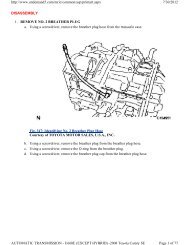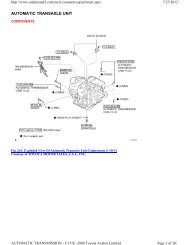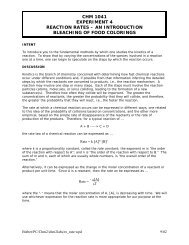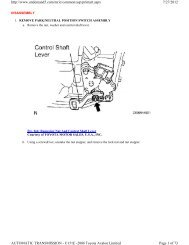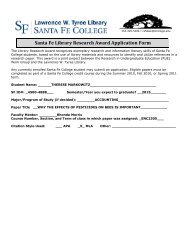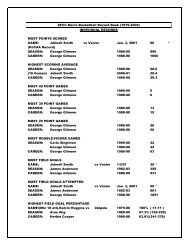1 MAC1105, College Algebra Study Questions for Common Final ...
1 MAC1105, College Algebra Study Questions for Common Final ...
1 MAC1105, College Algebra Study Questions for Common Final ...
You also want an ePaper? Increase the reach of your titles
YUMPU automatically turns print PDFs into web optimized ePapers that Google loves.
d. The effective rate <strong>for</strong> compounding quarterly is 1 + .<br />
<br />
<br />
- 1 ≈ 0.05875, and the<br />
effective rate <strong>for</strong> compounding continuously is . - 1 ≈ 0.05919. Thus continuous<br />
compounding has a slightly greater effective rate.<br />
46. a. U(x) = 10e -0.139x , where x is measured in billions of years.<br />
b. 5 = 10e -0.139x , and thus ½ = e -0.139x , ⇒ ln (1/2) = -.139x , ⇒ x =4.987, about 5 billion years.<br />
47. a. ½(ln4 + ln x + ln y) b. <br />
<br />
(ln 2 + ln x) – ln (4) c. ln (3) + ln (x)<br />
<br />
48. a. x = ln(10) ≈ 2.303 b. x = log(3) ≈ 0.477 c. x = log(5)/log(4) ≈ 1.161<br />
d. x = ≈ 148.413 e. x = - 1 ≈ 19.086 f. No solution [ln(-4/3) not defined]<br />
49. y = C . , and thus the effective interest rate r = e .07 – 1 = 0.0725 = 7.25%.<br />
50. a. A = log(x), B = log(x-1), and C = log(x-2); so f(x) matches A, g(x) matches B, and h(x) matches C.<br />
b. log(1) = 0; thus f(1) = g(2) = h(3) = 0.<br />
c. f has 1 as its x-intercept; g has 2 and h has 3.<br />
51. a. N = 10 . = . b. Q = 5 ∙ 10 ∙ . = 5 ∙ 10 ∙ .<br />
c. P = 500 ∙ . = 500 ∙ .<br />
52. a. 35 micrograms at t = 0; b. A(7) = 28.57 micrograms; c. t = 122.6 days; d. t = 23.90 days<br />
53. a. Since Q(75000) = 0.5 , the half-life is 75000 years.<br />
b. Q = Q0(.99999) t<br />
c. The annual percent change is .99999 – 1 = -0.00001 = -0.001%, so annual decay rate = 0.001%<br />
54. a. P(t) = 12e rt → 600,000,000 = 12e r(90) → 50,000,000 = e 90r → ln(50,000,000) = 90r → r = .1970<br />
→ P(t) = 12e 0.1970t ; b. P(141) = 1.389 X 10 13 or almost 14 trillion rabbits<br />
55. a. S is multiplied by 16; V is multiplied by 64.<br />
b. S is multiplied by ; V is multiplied by .<br />
c. S is divided by 9; V is divided by 27.<br />
d. S is divided by ; V is divided by .<br />
56. a. Y = kX 3 b. 10 = k(2) 3 → k = 10/8 = 1.25<br />
c. k(5X) 3 = 125kX, so Y is multiplied by a factor of 125<br />
57. L = kx 5 → L = k(2x) 5 → L = 32kx so L is mulplied by 32 or is 32 mes greater<br />
<br />
58. a. = √<br />
d 2 , k = 1; b. A =khr 2 , k = 2π ; c. V = kBh, k =1; d. T = k u 2 , k = 0.25<br />
30







